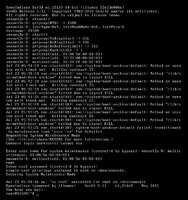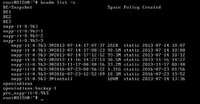Does not really matter
- you can update OmniOS + napp-it independently
- you can use a newer VM template (with a newer OmniOS and napp-it)
You may need to redo user settings or napp-it settings
- Export > Import a pool is the proper way
But you can import a pool without a prior export - no problem
- you can update OmniOS + napp-it independently
- you can use a newer VM template (with a newer OmniOS and napp-it)
You may need to redo user settings or napp-it settings
- Export > Import a pool is the proper way
But you can import a pool without a prior export - no problem
![[H]ard|Forum](/styles/hardforum/xenforo/logo_dark.png)

